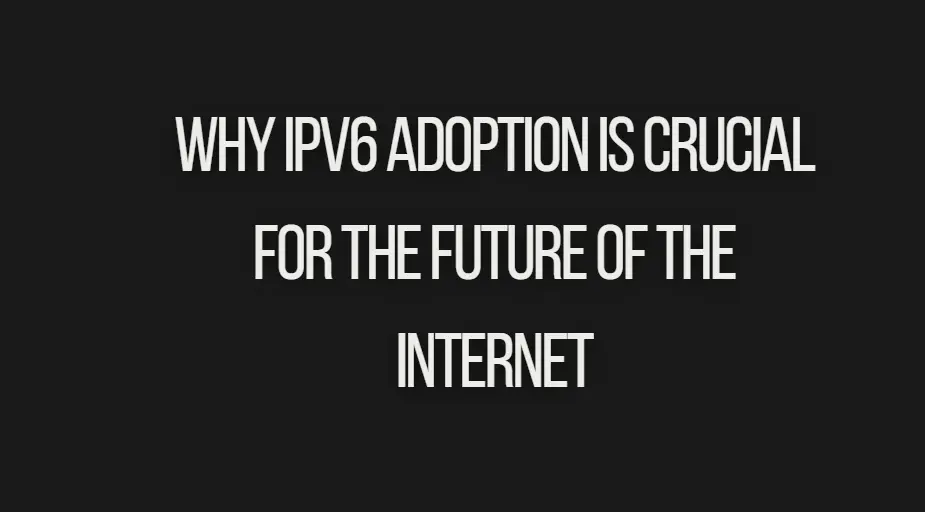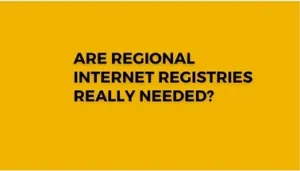As our digital world continues to expand at an exponential rate, the foundation of the Internet—IP addressing—faces a fundamental limitation. The current widely-used Internet Protocol version 4 (IPv4) has long exhausted its available address space, pushing the global community toward the adoption of Internet Protocol version 6 (IPv6). But why is IPv6 so essential, and what makes it a cornerstone for the Internet’s future?
Table of Contents
ToggleIn this blog post, we’ll explore the significance of IPv6 adoption, the benefits it brings, the challenges holding it back, and why businesses, governments, and individuals must prioritise this transition now.
What Is IPv6 and Why Was It Developed?
IPv6, short for Internet Protocol version 6, is the most recent version of the Internet Protocol, designed to replace IPv4. While IPv4 uses 32-bit addresses and supports approximately 4.3 billion unique addresses, IPv6 uses 128-bit addresses, allowing for 340 undecillion (3.4 x 10^38) unique IP addresses.
The transition to IPv6 was initiated in the late 1990s when it became clear that the explosive growth of the Internet would quickly consume all available IPv4 addresses. This problem has only worsened with the rise of smartphones, IoT (Internet of Things), cloud computing, and 5G networks—all requiring unique IP addresses.
The Benefits of IPv6: More Than Just Address Space
While the expanded address capacity is the most obvious advantage of IPv6, its true value lies in a range of technical and operational improvements:
1. Enhanced Scalability
With IPv6, there’s no longer a need for workarounds like Network Address Translation (NAT), which became necessary under IPv4 to stretch the limited number of addresses. IPv6 allows every device to have a globally unique IP address, simplifying network architecture and improving efficiency.
2. Improved Security Features
IPv6 was designed with security in mind. IPsec (Internet Protocol Security), which enables end-to-end encryption and secure authentication, is a core requirement in IPv6. While it can be implemented in IPv4, it’s optional and less consistently used.
3. Better Network Efficiency and Performance
IPv6 allows for more efficient routing, reducing the size of routing tables and enhancing performance. Its streamlined packet headers improve packet processing and enable more responsive connections for modern applications.
4. Built-In Support for Mobile and IoT Devices
IPv6’s automatic address configuration and enhanced support for mobility are crucial for the expanding universe of IoT and mobile devices. It provides better connectivity and seamless roaming for mobile users, which is essential in the 5G era.
5. Simplified Network Management
Stateless Address Autoconfiguration (SLAAC) in IPv6 allows devices to automatically generate their own IP addresses, reducing the administrative burden of managing DHCP servers and manual configurations.
Why IPv6 Adoption Remains Slow
Despite its clear benefits, IPv6 adoption has been uneven globally. According to Google’s IPv6 adoption statistics, as of 2025, only around 45–50% of global Internet traffic uses IPv6. Several key challenges have slowed its adoption:
1. Legacy Infrastructure
Many organisations still operate legacy systems and hardware that are not compatible with IPv6. Upgrading this infrastructure requires time, budget, and technical expertise.
2. Lack of Awareness and Immediate Need
For many businesses, the urgency of IPv6 adoption is not fully understood. As NAT continues to serve as a temporary fix, the perceived pressure to migrate is reduced.
3. Training and Resource Gaps
IT teams may lack the training or knowledge to implement IPv6 properly. This skills gap can deter organisations from initiating a transition.
4. Cost and Complexity
While IPv6 reduces long-term costs and complexity, the initial transition involves financial and operational investments, which can be a deterrent for small and medium-sized enterprises (SMEs).
The Consequences of Delaying IPv6 Adoption
Failing to adopt IPv6 has both short- and long-term repercussions. Here are some of the key risks:
Reduced Connectivity: As more services and networks become IPv6-only, IPv4 users may face limited access or slower performance.
Security Gaps: Relying on older IPv4 networks with patchy IPsec implementations can increase security vulnerabilities.
Competitive Disadvantage: Companies that delay IPv6 adoption may fall behind in digital transformation and struggle with scalability in IoT and cloud services.
Operational Inefficiencies: Maintaining dual-stack (IPv4 and IPv6) environments is resource-intensive and complex.
Global Progress in IPv6 Deployment
Some countries and organisations are leading the charge in IPv6 deployment. For example:
India and the United States have some of the highest IPv6 adoption rates in the world.
Tech giants like Google, Facebook, and Amazon support IPv6 natively across many of their services.
ISPs and mobile carriers in developed markets are increasingly offering IPv6-enabled services by default.
This progress reflects the growing recognition that IPv6 is not just a technical upgrade—it’s a strategic necessity.
Best Practices for IPv6 Adoption
To ensure a successful transition to IPv6, organisations should consider the following best practices:
Conduct an IPv6 Readiness Assessment
Audit your existing infrastructure to determine compatibility and necessary upgrades.Train Your IT Team
Equip your staff with the knowledge and tools to plan, deploy, and maintain IPv6 networks.Start with Dual Stack Implementation
Run IPv4 and IPv6 in parallel to maintain service continuity while gradually shifting traffic.Update Security Policies
Adjust firewall rules, intrusion detection systems, and monitoring tools to handle IPv6 traffic.Work with IPv6-Ready Vendors
Ensure your service providers and technology partners support IPv6 natively.
IPv6 and the Future of the Internet
As the digital economy continues to grow—with billions of new devices, applications, and users coming online—IPv6 is no longer optional. It’s an essential building block for a secure, scalable, and resilient Internet infrastructure.
IPv6 will empower:
Smart cities, with millions of interconnected sensors and devices.
5G and beyond, requiring ultra-low latency and massive addressability.
Cloud-native architecture, enabling seamless connectivity across borders and platforms.
Green IT initiatives, with IPv6’s efficient networking protocols helping reduce energy consumption.
Final Thoughts
The Internet is evolving, and IPv6 is the protocol that will sustain its growth for decades to come. While the path to adoption may involve challenges, the long-term rewards in terms of security, scalability, and innovation are undeniable.
Organisations that act now will be better positioned to compete, innovate, and lead in the digital future. The sooner we embrace IPv6, the stronger and more inclusive the Internet will become.





Pingback: The future of static IP addressing in a dynamic cloud world